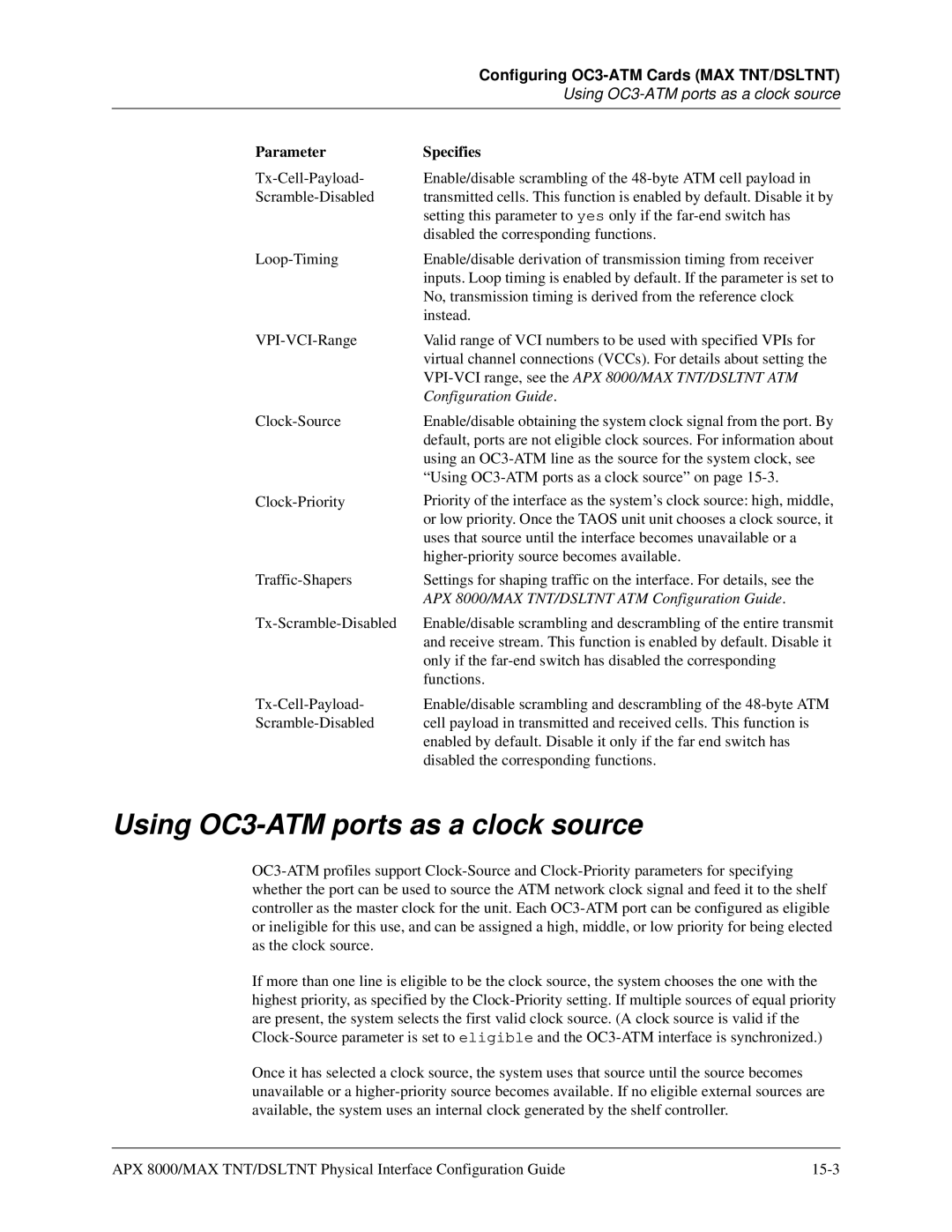| Configuring |
| Using |
|
|
Parameter | Specifies |
Enable/disable scrambling of the | |
transmitted cells. This function is enabled by default. Disable it by | |
| setting this parameter to yes only if the |
| disabled the corresponding functions. |
Enable/disable derivation of transmission timing from receiver | |
| inputs. Loop timing is enabled by default. If the parameter is set to |
| No, transmission timing is derived from the reference clock |
| instead. |
Valid range of VCI numbers to be used with specified VPIs for | |
| virtual channel connections (VCCs). For details about setting the |
| |
| Configuration Guide. |
Enable/disable obtaining the system clock signal from the port. By | |
| default, ports are not eligible clock sources. For information about |
| using an |
| “Using |
Priority of the interface as the system’s clock source: high, middle, | |
| or low priority. Once the TAOS unit unit chooses a clock source, it |
| uses that source until the interface becomes unavailable or a |
| |
Settings for shaping traffic on the interface. For details, see the | |
| APX 8000/MAX TNT/DSLTNT ATM Configuration Guide. |
Enable/disable scrambling and descrambling of the entire transmit | |
| and receive stream. This function is enabled by default. Disable it |
| only if the |
| functions. |
Enable/disable scrambling and descrambling of the | |
cell payload in transmitted and received cells. This function is | |
| enabled by default. Disable it only if the far end switch has |
| disabled the corresponding functions. |
Using OC3-ATM ports as a clock source
If more than one line is eligible to be the clock source, the system chooses the one with the highest priority, as specified by the
Once it has selected a clock source, the system uses that source until the source becomes unavailable or a
APX 8000/MAX TNT/DSLTNT Physical Interface Configuration Guide |
